I had so much fun at this party that I thought it should have its own blog piece!! We had the Young Archaeologists Club Christmas Party at MShed and everyone had a marvellous time!! We started the party with several activities including finds handling, games and we asked everyone what they wanted to learn about next year – suggestions included dinosaurs, the Greeks, trade, the history of medicine. Professor Alice Roberts joined our party and talked to everyone before cutting the cake I made – and what a nice cake!! Not that I’m biased or anything…My favourite activity was the string timeline! Using a scale of 1cm to 10years we travelled back through the centuries, zigzagging for metres across the room, with important and memorable events pegged onto the string as we went, right back to the Mesolithic!! Parents came in very handy to hold the string and were able to add a few events of their own! The party ended with a buffet lunch and watched The Matthew of Bristol, a replica of the English ship that discovered North America in 1497, sail around Bristol’s Floating Harbour…
I have thoroughly enjoyed this week – two Takeover Day sessions, a training day on Medieval and Post-Medieval Ceramics and I got to make miniature laurel wreath headdresses for teddy bears!! I love my job!!
The first Takeover Day session was at Oasis Academy Brightstowe and our Roman Merchandising Project. Yes I had to be at the school for 8:30am - but so did everyone else. The students really engaged with the idea of the project and enjoyed creating their designs for a range of different products. I liked chatting to the students and asking them about the parts of Kings Weston Roman Villa which had inspired them. 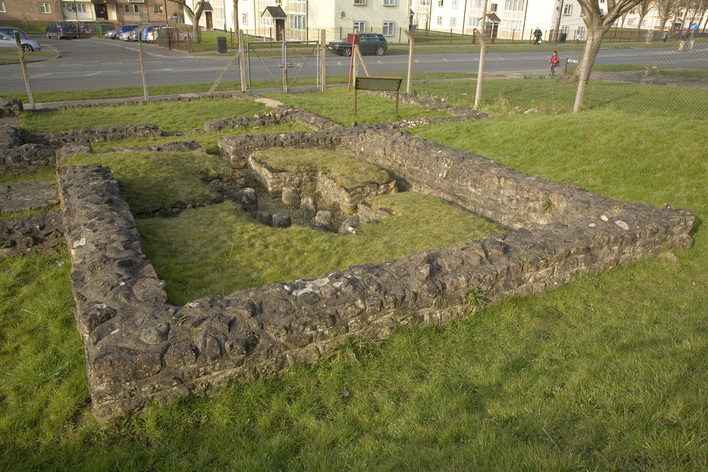 © Bristol Museums, Galleries & Archives The second Takeover Day session of the week was part of our second project for Kids In Museums with the very enthusiastic Duke of Edinburgh Group from Henbury School who became Curators and Conservators of Kings Weston Roman Villa. Kate and I started the session by introducing ourselves and the history of the Villa. Kate then took them on a tour and I told them about Roman food as well as answering some curious questions about the villa... 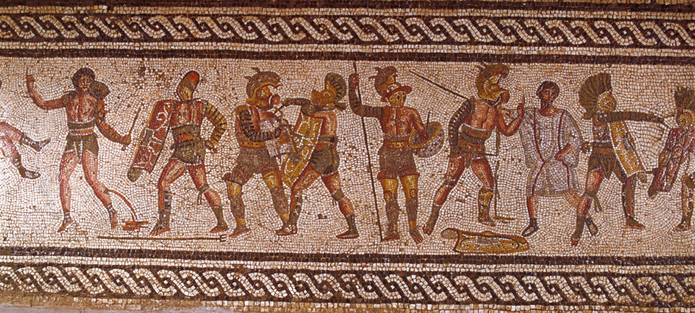 © www.bbc.co.uk © www.bbc.co.uk Q: “Did they have gladiator fights and bear baiting over there?”
Points to dining room
A: “The Romans did have entertainment during dinner but I don’t think they had gladiator fights or bear baiting."
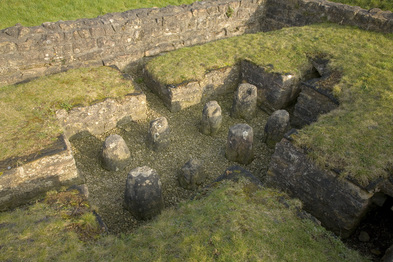 © Bristol Museums, Galleries & Archives © Bristol Museums, Galleries & Archives
Q: “Is it a swimming pool?”
Points to hypocaust (heating) system
A: “Not really.”
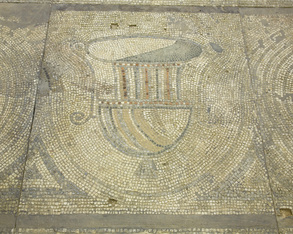 © Bristol Museums, Galleries & Archives © Bristol Museums, Galleries & Archives
Q: “Are people buried under here?”
Points to dining room floor
A: “They didn't find anyone when the Villa was excavated.”
I had a lot of fun working with the Duke of Edinburgh Group because their enthusiasm for the history of the Villa and for the tasks knew no bounds!! I am sooo looking forward to the next session with them!!
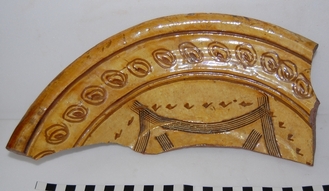 © Bristol Museums, Galleries & Archives © Bristol Museums, Galleries & Archives The training day on Medieval and Post-Medieval Ceramics was very handily based at Bristol Museum & Art Gallery and was run by Mike Ponsford and Kate Iles. Mike is the leading expert on the Medieval and Post-Medieval ceramics held by the museum. He was the Museum’s Curator of Field Archaeology before retiring and is now back working with the museum as a Monument Fellow. Mike is, simply put, an absolute fount of information about Medieval and Post-Medieval ceramics and was more than happy to answer any and all questions asked – which I did. A lot.
Now to explain how I got to make miniature laurel wreath headdresses for teddy bears…
… Over Christmas and New Year the museum is offering half-price family tickets for Roman Empire: Power & People if you bring along your teddy dressed up in a toga. Of course this is not an easy thing to do so Gail decided to make a ‘How to…’ video. So I got to make laurel wreath headdresses for teddy bears for the ‘How to…’ video and photographs to promote the offer. 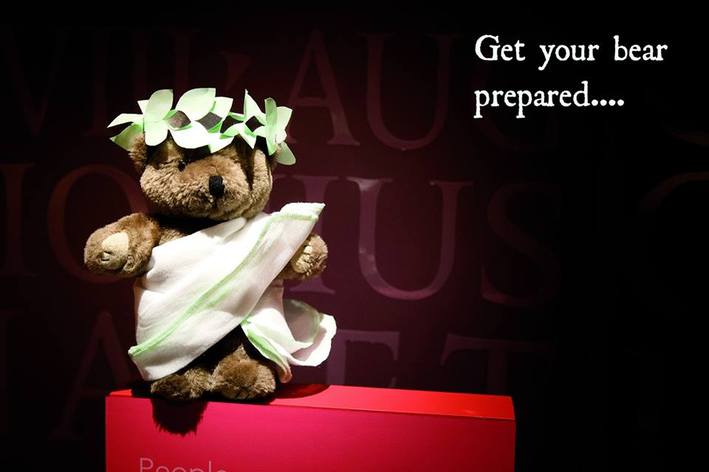 © Bristol Museums, Galleries & Archives
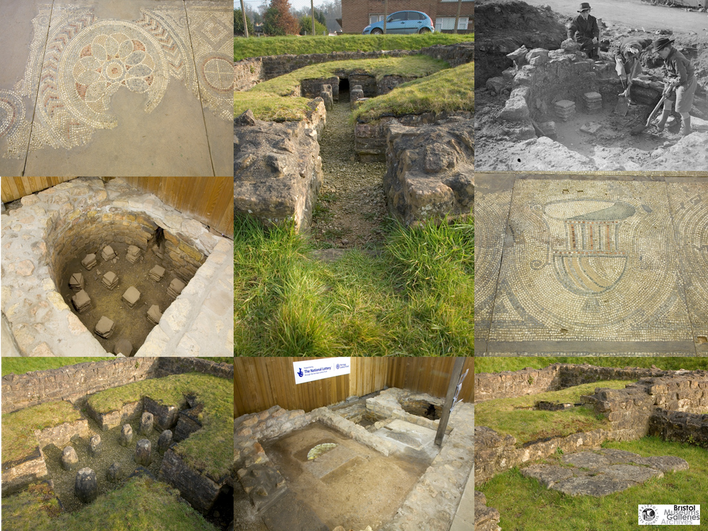 © Bristol Museums, Galleries & Archives This week has been dominated with preparations for our first session of the tentatively titled ‘Roman Merchandising Project’. The project, funded by the Bristol Decorative and Fine Arts Society, is for Year 10 Art Students at Oasis Academy Brightstowe to work with the artist Julie Roberts, to design and produce a new range of merchandise inspired by Kings Weston Roman Villa, which will be sold in Bristol Museum & Art Gallery Shop. The first session started at 8:30am at Oasis Academy Brightstowe and we (myself and Kate from Bristol Museums, Galleries & Archives, Marion from Bristol Decorative and Fine Arts Society and Julie Roberts) introduced ourselves and explained the aims and objectives of the project to the students. We then took them on a short field trip to Kings Weston Roman Villa to show them what remains of the Villa and to hopefully inspire them to create beautiful designs. This project is also one of two projects which Bristol Museums, Galleries & Archives are running for Kids In Museums Takeover Day. So, as well as the students seeing their products for sale in the museum shop – they have participated in a national celebration of children and young people’s contribution to museums, galleries and historic homes.
In comparison to last week, with the Roman themed family activity days, this week has been a lot quieter. I’m not complaining though!!
I have been able to read about the work the other lovely placement holders are doing on the Council for British Archaeology website and their blogs. I have indulged my cake-making hobby by designing the Young Archaeologists Club Christmas Party cake (photos to come…) and started to get the hang of Twitter.
It was also during this week, that I made the fateful decision, “I am going to write a blog.”
The next thoughts that entered my head were off course, all along the lines of:
“How do I write a blog?”, “Where do I write a blog?”and “What have I got myself into?”
Thankfully with the advice of my fellow placement holders and the lovely Fay and Claire who work at the museum, I have been enjoying writing about what I have been doing, the places I’ve been and the people I’ve met. I hope to continue writing and keeping you up to date about my activities because surprisingly, I am rather enjoying it!
This week we ran our two Roman themed family activity days.
I have to say that both days were a resounding success!!
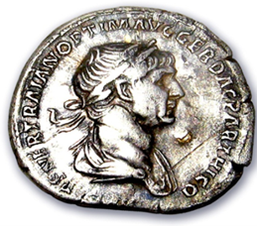 © Portable Antiquities Scheme © Portable Antiquities Scheme Our first day at Lawrence Weston Community Farm involved eating Roman food and making Roman coins. We had over 25 children join us and they really enjoyed tasting food that the Romans ate and finding out what foods they brought with them. We also had real Roman recipes for ‘Baked Apples and Calf’s Brain’, ‘Ostrich Stew’ and ‘Fish Sauce’ for children to look at. Majority vote decided that some Roman food was simply yucky! There was great fun making replica roman coins – it’s amazing what you can do with cardboard, silver paper and glitter glue!!
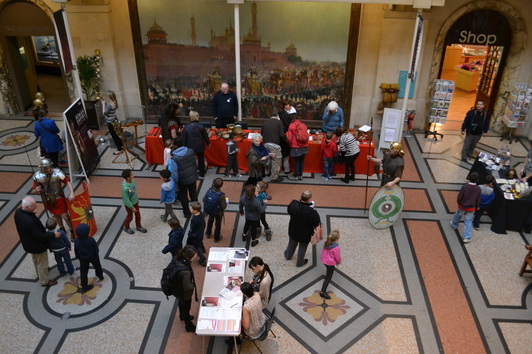 © Bristol Museums, Galleries & Archives We had Romans Soldiers from the Ermine Street Guard, Roman makeovers with Reflections Training Academy, dressing up, Roman spinning and weaving, tales of Roman myths with story teller Wilf Merttens, behind the scenes store tours, real roman objects to examine and my favourite bit – craft activities!! 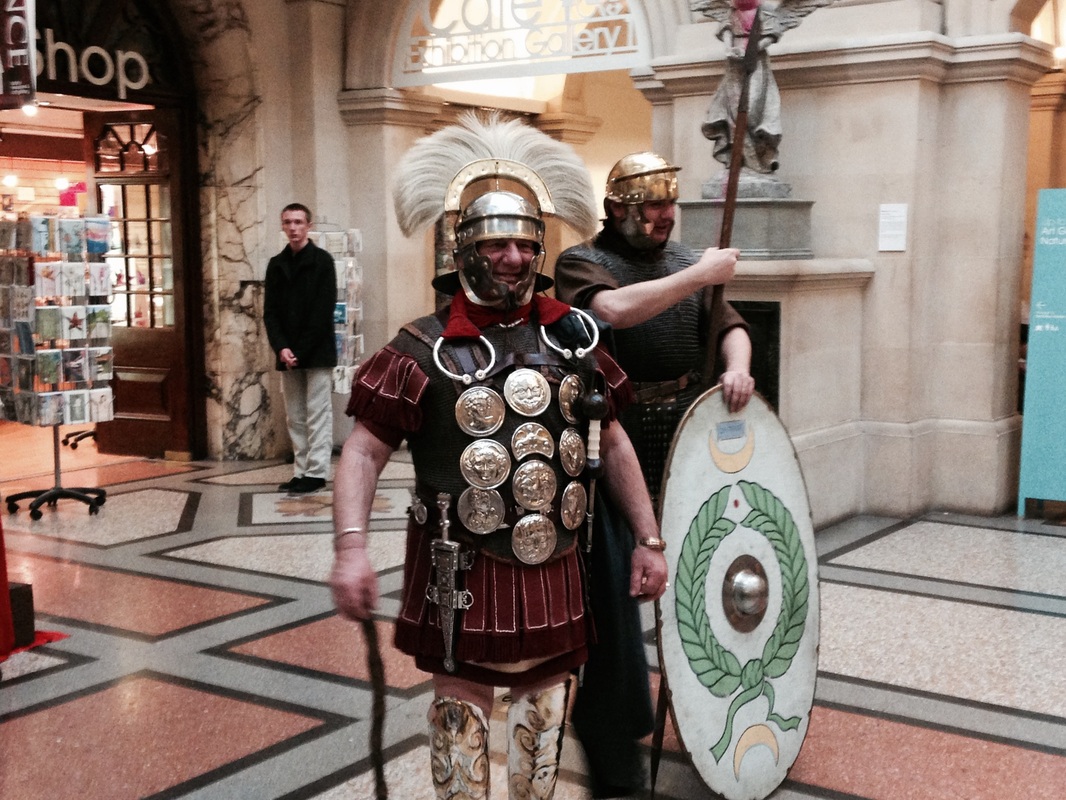 © Bristol Museums, Galleries & Archives With my team of simply wonderful volunteers, we were making roman helmets, laurel wreaths and tiaras.
For some reason roman helmets were the most popular activity with boys and girls … might have had something to do with the Roman soldiers walking about …
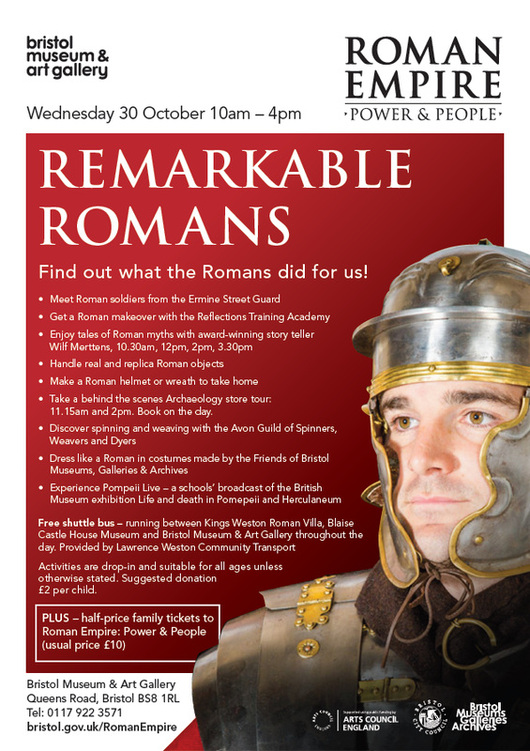 © Bristol Museums, Galleries & Archives
We - the archaeology department – have been getting ready for two Roman themed family activity days next week. The first day is at Lawrence Weston Community Farm and we will be eating Roman food and making Roman coins. I have had great fun finding out what people in the Roman Empire ate!! Baked Apples and Calf’s Brain, Ostrich Stew and the most popular sauce in the whole of the Roman Empire – Garum or what we call Fish Sauce. The making of garum is really disgusting so I won’t describe it in graphic detail. You just take fish parts, soak them in salt for about 3 months in the sun, separate the clear liquid from the remaining fleshy bits and there you have it – Homemade Garum! I did come across a very interesting fact about Apple Cider - Romans didn’t invent it!! Apple Cider was already being made and drunk in Britain before the Romans arrived. The Romans decided that they liked apple cider so much that they started to plant orchards to make more. 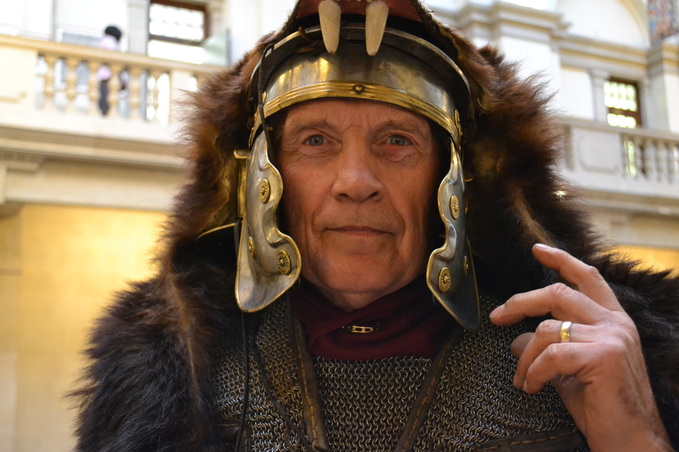 © Bristol Museums, Galleries & Archives © Bristol Museums, Galleries & Archives The second day is called Remarkable Romans and it is at Bristol Museum & Art Gallery. There are going to be activities all over the museum building and you can learn more about what the Romans did for us! The Roman soldiers from the Ermine Street Guard were so popular at the ‘Roman Empire: Power & People ’Exhibition Opening that we asked them to come back for Remarkable Romans!! I learnt several new facts about the Romans this week! Did you know…?The beehive, helmet, hair bouquet and pillbox are all modern names which have been given to Roman hairstyles!
Fun Fact!
Julius Caesar loved wearing a laurel wreath because it covered up his bald patch! I couldn’t believe it!!Roman soldiers could march 20 miles (30 km) a day wearing their armour and carrying 30kg of equipment!
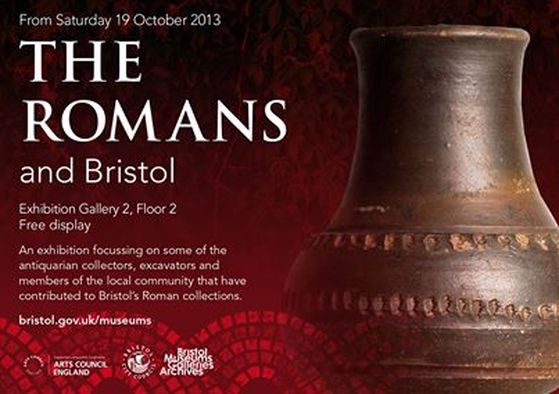 © Bristol Museums, Galleries & Archives © Bristol Museums, Galleries & Archives I was really lucky this week and got to learn more about the work of curators… We all know that curators care for their collections as well as look after galleries and exhibitions. This week I got the opportunity to help in the preparations for a new archaeology exhibition of Roman objects found in Bristol called – you’ve guessed it – ‘ Romans and Bristol’. The exhibition ties in with the touring exhibition ‘ Roman Empire: Power & People’ which shows 160 Roman objects from the British Museum and opened when I first started working at Bristol Museum & Art Gallery. When Kate asked me to give her a hand with the exhibition I jumped at the chance. Over two days I learnt how to handle objects going on display, how to lay out objects in a display case in an interesting way and how to make sure that at the end of the exhibition, the right object goes back in the right box! The exhibition runs from Saturday 19th October to Late Spring 2014 and mainly focuses on the activities of antiquarian collectors, excavators and local residents who have all contributed towards Bristol’s Roman Collection. What’s very exciting is that most of the objects have never been on display before!
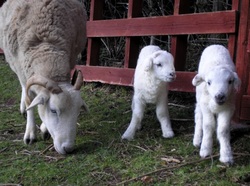 The sheep at the Farm! http://lwfarm.org.uk/ The sheep at the Farm! http://lwfarm.org.uk/ I got to explore more of the wonderful City of Bristol this week!! Kate Iles took me out to Lawrence Weston Community Farm to see the animals and woodland. The farm was originally started by local residents in 1986 on - I couldn’t believe it - the site of a former Bristol City Council rubbish tip! Well it definitely doesn't look like a rubbish tip anymore!!
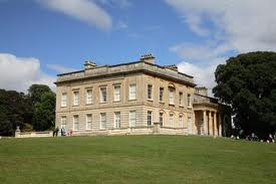 © Bristol Museums, Galleries & Archives © Bristol Museums, Galleries & Archives I also got a tour around Blaise Castle House Museum and King’s Weston Roman Villa. The social history collections are kept at Blaise Castle House Museum which was built 1796 and 1798 by John Harford who was a wealthy Bristol merchant and banker. Thankfully some of the beautiful original ornamental decorations are still in the house. There are several casts of Classical and Neo-Classical sculptures and reliefs -including a set cast from the Parthenon marbles!
Not too far from Blaise Castle House Museum is Kings Weston Roman Villa – the only surviving Roman Villa in Bristol. The Villa was used for about 100 years before being abandoned as the Western Roman Empire started to crumble.
At the end of the week I was able to explore Brandon Hill Park and Cabot Tower as the Friends of Brandon Hill were organising a Community Archaeology Event and invited me to come along. They were doing a Geophysical Survey of the potential Civil War defences in the park just below Cabot Tower. Peter Insole came along and did a walking tour of the area! I learnt a lot about the English Civil War and how Bristol was affected by it.
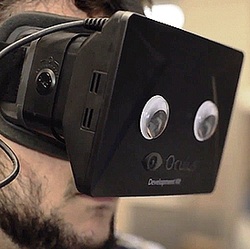 Virtual Reality Headset © www.pcmag.com Virtual Reality Headset © www.pcmag.com It's been another interesting week here at Bristol Museum and Art Gallery. The Technical Development Manager - Zak Mensah - organised a Virtual Reality demonstration ... cue equal measures of envy and indifference ... I went and found it really interesting! Yes, I concede that you do look like a complete idiot when you have the headset on ... but when you start to move about the virtual environment you forget about the headset!! Your attention is solely on admiring your new environment! There are endless possibilities for the use of this technology both now and in the future especially within museums and archaeology.
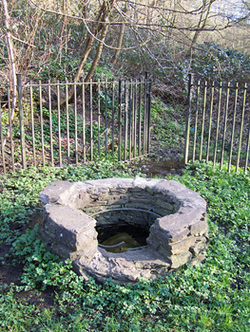 St. Anne's Well © www.brislingtonarchaeology.org.uk St. Anne's Well © www.brislingtonarchaeology.org.uk On Wednesday afternoon Kate and I headed to Brislington for a Finds Session with Kurt the Finds Liason Officer and Brislington Community Archaeology Project (BCAP). I really enjoyed meeting BCAP, they run alot of events around Brislington which has an interesting medieval history and a royal connection.... There is a shrine (St. Anne's Well) in St. Anne's Woods which apparently Henry VII visited not long after he won the Wars of the Roses and became King!So back to the Finds Session ... there were a good number of visitors all interested in finding out more about objects they had found in their gardens or during walks in the woods. BCAP have started to track where the different types of objects have been found to help build up a picture of the archaeology of Brislington.
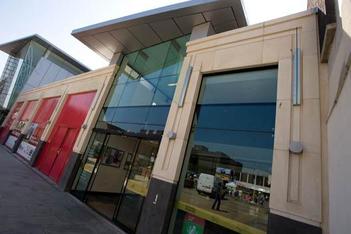 Newport Museum and Art Gallery © www.bbc.co.uk/arts/yourpaintings Newport Museum and Art Gallery © www.bbc.co.uk/arts/yourpaintings At the end of the week I went to a Society of Museum Archaeologists Training Day. I learnt about Tackling Bulk Archaeology: Animal Bone at Newport Museum & Art Gallery.I learnt alot about animal bones and collections. My favourite part of the day was working in teams to correctly set out the skeleton of a sheep or goat - thankfully no one was squeamish! - and we got the bones set out correctly, eventually.
This has been another fun week.I have been off exploring some of the different museum sites in Bristol this week - there are six of them.
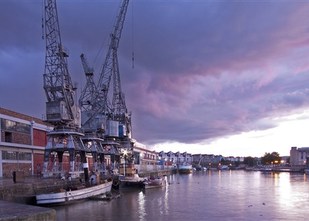 MShed © Bristol Museums, Galleries & Archives MShed © Bristol Museums, Galleries & Archives Gail Boyle (the archaeology curator) gave me a tour around M Shed which tells the story of Bristol and its people in a 1950's transit shed on Bristol’s historic wharf. You're probably thinking that the 'M' stands for Museum - it doesn't! The transit shed which houses the museum was originally called M Shed. I can't wait to get back and have another look around!
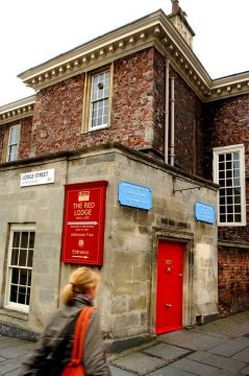 The Red Lodge © Bristol Museums, Galleries & Archives The Red Lodge © Bristol Museums, Galleries & Archives The Red Lodge Museum has been described as Bristol's 'hidden treasure' because of the magnificent Tudor rooms and I have to agree.The seven main rooms are used to trace the continuing and fascinating history of the house from its Tudor origins as a guest house and entertainment pavilion, through Georgian expansion, its role as a Victorian Girls' Reform School and current incarnation as a museum. It is easy to distinguish between the original Tudor rooms and the Georgian rooms. Thankfully they kept the Tudor wood panelling! The dark engraved wood is absolutely gorgeous and incredibly intricate. It is a beautiful contrast to the light, airy and richly decorated Georgian rooms. In 1854 the Red Lodge was turned into a school by Mary
Carpenter. Mary was a social reformer who founded the first Girls’ Reformatory at the Red Lodge. The school encapsulated her radical and progressive ideas of how to improve and nurture the Britain's poor. This was a stark contrast to the workhouses and prisons which were common during the Victorian Era. The Reform School closed in 1917 and in 1919 the Red Lodge was bought by James Fuller Eberle for the Bristol Savages and the Bristol Corporation (now Bristol City Council). Again - I can't wait to get back and have another look around.There are so many stories contained within the walls of these museums...
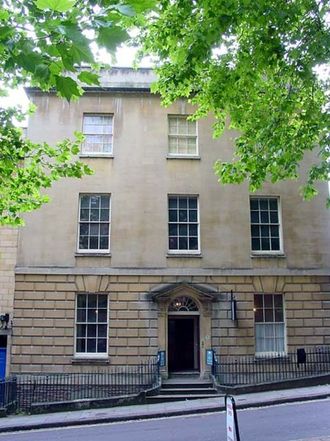 The Georgian House © Wikipedia The Georgian House © Wikipedia The Georgian House Museum was built in 1790 for John Pinney who was a slave plantation owner and sugar merchant. The six storey townhouse was built in the centre of Bristol and has been carefully restored to its former glory giving insights into life above and below stairs. Did you know?The house was also home to John Pinney's slave who was called Pero. Pero's Bridge at Bristol Harbour is named after him.
Walking around the Georgian House felt like I had entered a Jane Austin novel - and yes I did indulge and have an Elizabeth Bennet moment!
Did you know?
Apparently this was the house were the poets William Wordsworth and Samuel Taylor Coleridge first met.
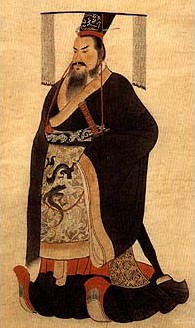 I also took part in my first Young Archaeologists Club meeting! The Curator of Eastern Art and Culture Willemijn van Noord explained about Chinese archaeology and the First Emperor Qin Shi Huang, his tomb and his terracotta warriors. I got to create a game to help explain Chinese dynasties to the young archaeologists. I decided to show the Chinese and British timelines alongside each other. The young archaeologists then had to match pictures of people and events to the correct part of the timeline. For example: a picture of Stonehenge was placed at the start of the Bronze Age and a picture of the First Emperor was placed at the Qin Dynasty. This was a really interesting meeting and the leaders learned just as much as the young archaeologists.
|
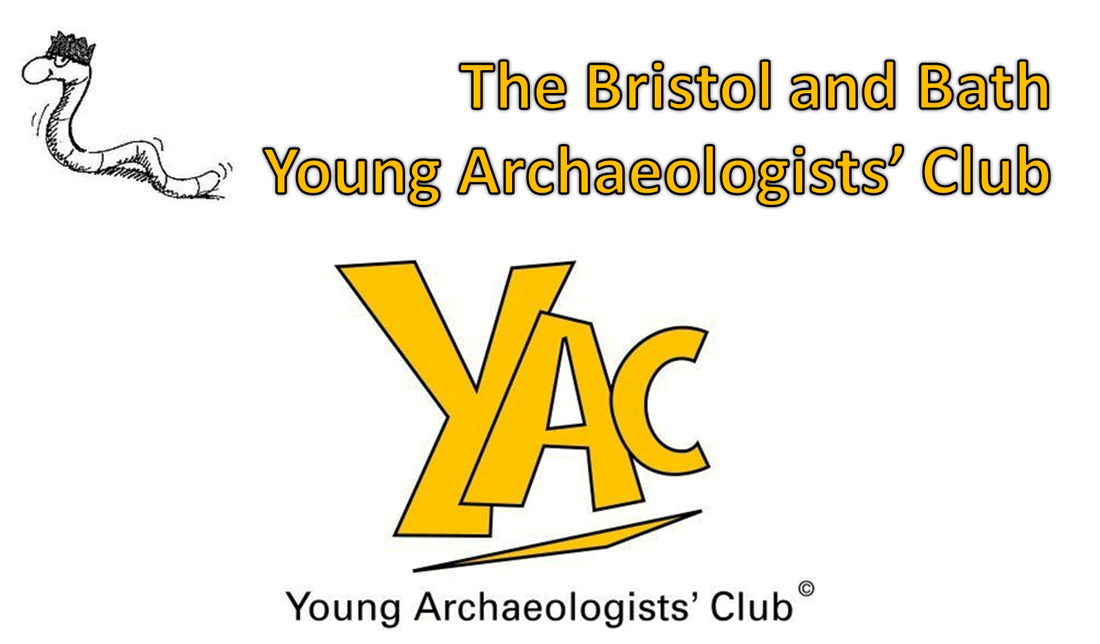







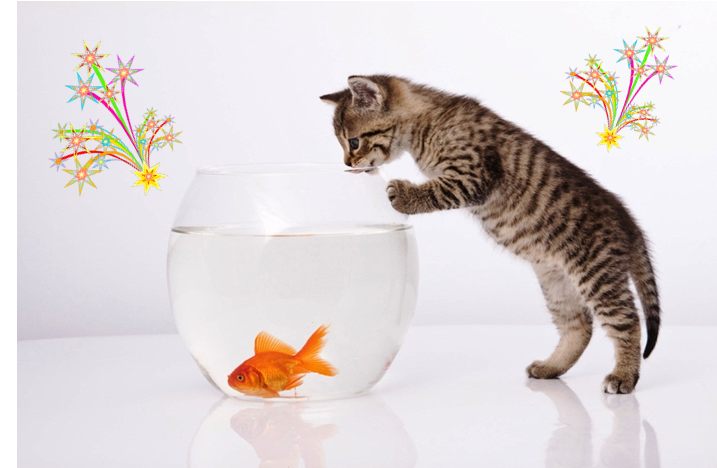
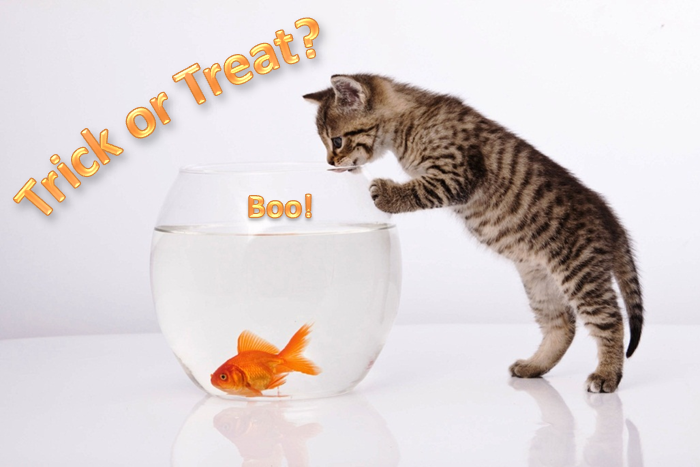




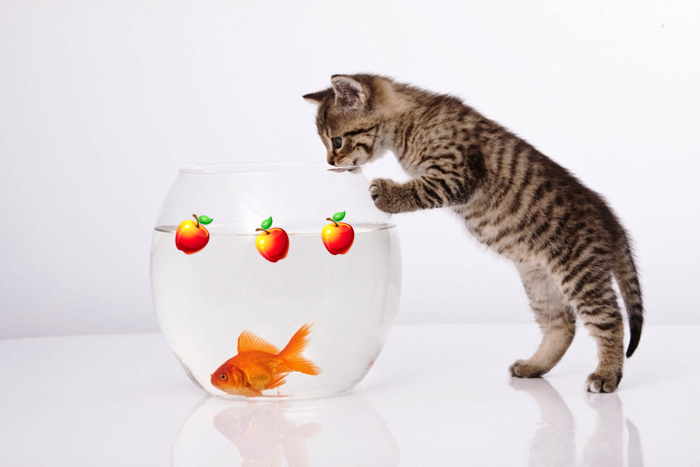




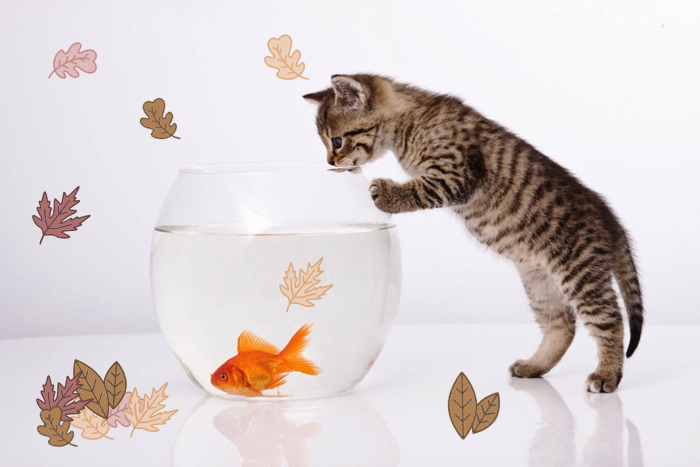







 RSS Feed
RSS Feed
